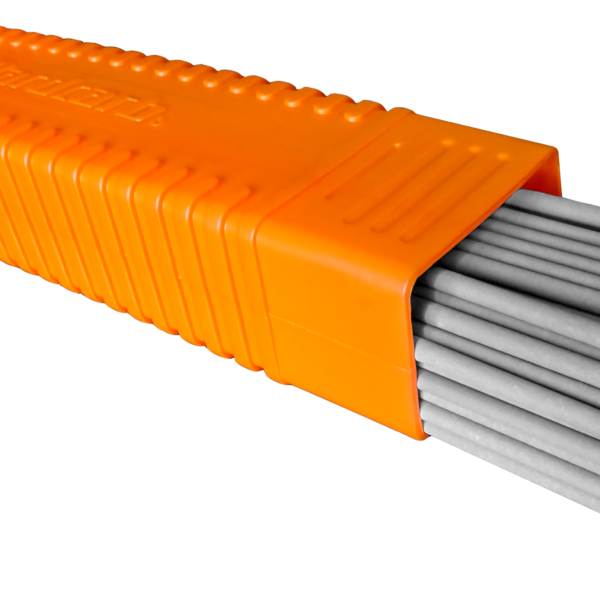- Home
- Main Catalog
- Buffer layers - Build up - Cladding - Joining
- Dissimilar & stainless steels
- Nicrolloy 20.10
Nicrolloy 20.10

An extra low carbon stainless steel electrode with properties like resistance to oxidation and resistance to cracking at high temperature. The extra low carbon decreases the possibility of intra-granular corrosion and the balanced chromium and nickel levels provide enough ferrite in the weld metal for high resistance to hot cracking. The weld metal has excellent creep strength and is of radiographic quality.
Weld deposit characteristics:
The weld deposit is austenite with a controlled level of ferrite, normally in the range 3-10 FN depending on the application. The electrode gives smooth arc, fine bead appearance and shiny finish. The striking and restriking of the electrode is remarkably easy. The slag is easily controlled and does not interfere with the arc action. The electrode exhibits all positional (except vertical down) welding capabilities and has outstanding operator appeal.
Recommended uses and applications
» for joining AISI 301L, 302L, 304L and 308L steel having 18Cr/8Ni with low carbon content.
» for welding for clad steels of similar composition.
» for overlays on unalloyed, low alloy steels etc.
» applicable for dairy, chemical plants and distillery equipments.
Additional info
Anti-wear suitability
| Metal-to-Metal friction Metal surfaces in relative motion forced into contact with or without lubricant. Degradation by the formation of micro-welds between the contacting surfaces. | - |
| High pressure abrasion Wear by relative movement under pressure of mineral particles of suitable hardness, shape and texture to remove material from the metal surface, leaving superficial deformation. | - |
| Cavitation Tearing out of grains from the metal surface by the formation and implosion of bubbles in a liquid in rapid motion. | - |
| Mechanical fatigue Fatigue and formation of cracks in surface regions due to tribological stress cycles that result in the separation of material. | - |
| Thermal fatigue Cyclic exposure to high temperatures leading to permanent deformation by alternate expansion and contraction. Alteration of the structure and properties of the material. | - |
| Hot oxidation Creation of a poorly adhering oxide layer that reforms constantly. Degradation by loss of material thickness. | - |
Workability
| Work hardening Work hardening is the process of making a metal harder and stronger through plastic deformation. When a metal is plastically deformed, dislocations move and additional dislocations are generated. | |
| Edge retention Suitability for creating sharp edges and retaining them during operation. | |
| Machining Machinability is the ease with which a metal can be cut (machined) permitting the removal of the material with a satisfactory finish at low cost. | Highly suitable. |
Mechanical properties
| Yield strength | > 400 Mpa |
| Tensile strength | 580 - 650 Mpa |
| Elongation A5 | 30% - 40% |
| Impact strength | > 55 J (+20°C) |